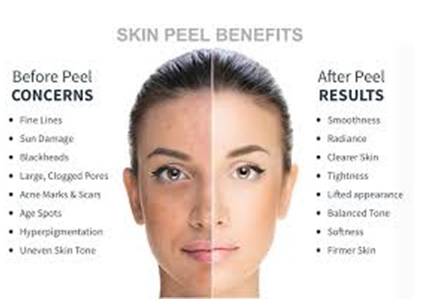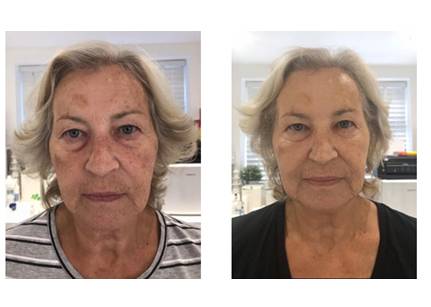As far back as 1500BC Egyptian physicians would use a type of sandpaper to abrase the top layer of the skin to remove scars.
More recently, in the past 100 years, there have been various different methods used to remove the top layer of skin such as cumbersome human powered machines and wire brushes. However, these treatments came with complications such as a high risk of infection, long downtime and pain during the treatment.
Physicians and aestheticians use a variety of facial resurfacing techniques to improve the appearance of the skin by addressing skin quality, age spots, fine lines, and scarring.
Peels are chemical solutions used to exfoliate and enhance skin turnover, improving the appearance of the skin.
Just as the name implies, peels work by removing layers of skin cell buildup to reveal a softer, smoother complexion. Chemical peels can be used to diminish the appearance of fine lines and wrinkles, improve the appearance of acne-prone skin, improve the appearance of mild scars, dark spots and improve overall skin tone and texture.
A glycolic acid chemical peel uses glycolic acid as the main active ingredient to provide results. The concentration of acids can vary. These peels effectively exfoliate the skin’s surface layers and encourage skin renewal with little to no peeling, flaking or downtime. A retinol chemical peel uses retinol as the main active ingredient to exfoliate, improve fine lines and more. This in-clinic treatment may result in 3 – 7 days of visible peeling and flaking post-treatment.
While chemical peels are most commonly used on the face, they can be used effectively on most areas of the body which would benefit from exfoliation.
As with any aesthetic procedure, it is absolutely essential that a full and comprehensive consultation is performed prior to any treatment. The consultation will always include your past medical and surgical history, lifestyle, allergies and medications.
How a chemical peel is performed will depend on the product used. The glycolic peels are generally on the skin for 5 minutes before they are neutralised. The Retinol peels are translucent and stay on the skin for 8 hours and can be washed off at home. Whether you should expect actual ‘peeling’ will depend on the peel used and your reaction to it. This will all be discussed in detail during your consultation.
Many people can see a significant improvement in the appearance of their skin tone and texture in as little as one peel treatment. This is because a peel functions as an exfoliant, which can drastically improve the superficial quality of your skin.


Results of the treatment and whether there is actually skin ‘shedding’ will vary depending on the type of peel being used.
The risks of chemical peels are minimal when performed safely using the right products. There may be some redness post treatment and depending on the peel being used, some shedding.
An experienced aesthetics practitioner will always ensure that a thorough consultation is performed and should be happy to answer any questions you may have. Consider asking the following;
- What is your level of experience and qualifications?
- What is the name or brand of product you are using?
- Are there any risks or side effects I could experience?
- What will happen if anything goes wrong?
- What insurance cover do you have for chemical peel treatments?
Glycolic peels £70 each
Retinol peels £100 each
